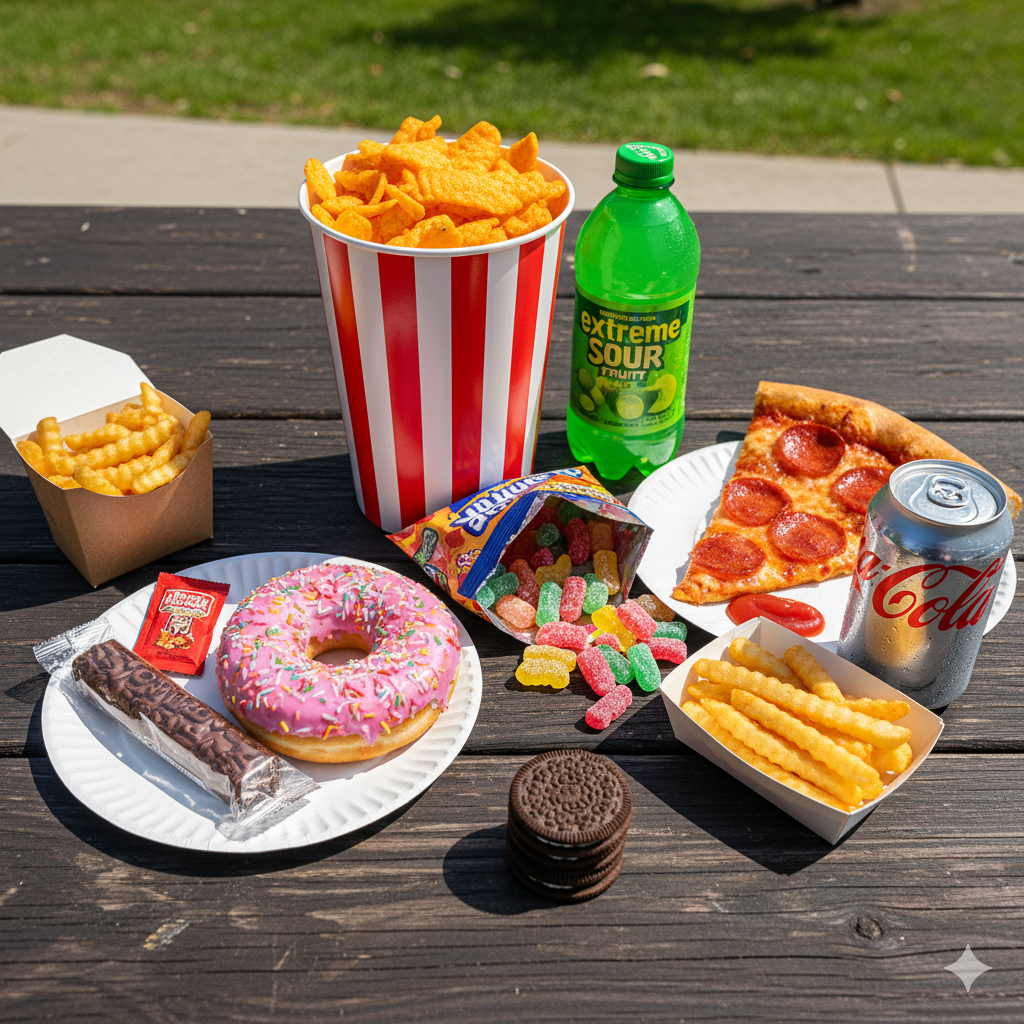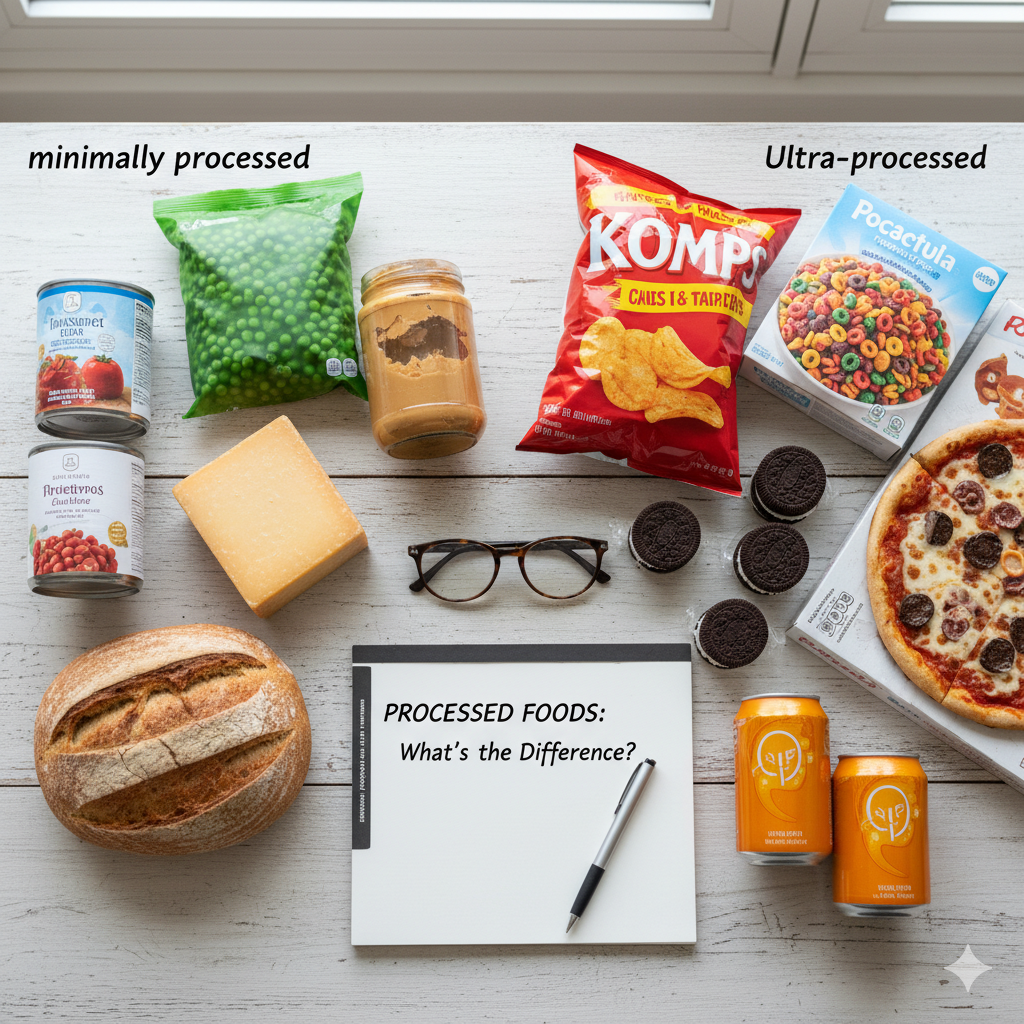The modern world runs on speed and convenience, and nowhere is this more evident than in our food supply. Processed foods, from a simple bag of frozen vegetables to a complex ready-to-eat meal, are a ubiquitous part of contemporary life. They fill our grocery aisles, line our pantries, and save us countless hours in the kitchen. Yet, they are also at the heart of a major health debate, often cited as a driving force behind the global epidemics of obesity, diabetes, and heart disease.
The reality of processed food is not black and white; it is a complex spectrum ranging from beneficial minimal processing to highly problematic ultra-processing. Understanding this spectrum—the good, the bad, and the ultra-ugly—is the first crucial step in navigating our daily dietary choices and moving towards a truly nourishing diet.
Defining the Spectrum of Processed Foods
The term “processed food” is incredibly broad, encompassing nearly all food that has been altered from its raw state. To make informed decisions, it helps to break processing down into four main categories:
1. Unprocessed or Minimally Processed Foods
These are whole foods in their natural state or those that have been altered minimally without the addition of salt, sugar, fats, or other additives. The processing methods are generally for safety, preservation, or convenience.
- Examples: Fresh fruits and vegetables, raw meat, pasteurized milk, whole grains, dried beans, bagged salads, and frozen fruits/vegetables (picked and flash-frozen at their peak nutritional value).
- Role in Diet: These form the foundation of a healthy diet, offering the highest density of essential vitamins, minerals, fiber, and phytochemicals.
2. Processed Culinary Ingredients
These are substances derived directly from the first group and are used in preparing food. They are generally not consumed on their own.
- Examples: Vegetable oils (pressed from seeds/fruits), flours (milled from grains), sugar (extracted from cane/beets), and salt.
- Role in Diet: Essential components for home cooking, but their nutritional quality depends on the source (e.g., whole-grain flour vs. refined white flour).
3. Processed Foods
These foods combine ingredients from the first two groups. They are usually modified to enhance durability, flavor, or texture, often involving added salt, sugar, or fat, but are still recognizable as food.
- Examples: Simple breads, cheeses (like cheddar, produced through fermentation and aging), canned vegetables or fish, plain yogurt with minimal additives, and cured meats (like bacon).
- Role in Diet: Can be part of a healthy diet, particularly those that retain a high nutrient-to-calorie ratio, such as canned beans or tuna. Moderation is key due to added sodium and fats.
4. Ultra-Processed Foods (UPFs)
This is the category that draws the most concern. Ultra-processed foods are industrial formulations made with little to no whole food ingredients. They typically contain a high number of additives—such as artificial colors, flavors, emulsifiers, preservatives, and chemical enhancers—designed to create hyper-palatability, increase shelf life, and be cheap to produce.
- Examples: Sodas and energy drinks, packaged snacks (chips, crackers, sugary cereals), fast-food products, instant noodles, most packaged baked goods, candies, and many mass-produced ready meals.
- Role in Diet: Their high content of refined carbohydrates, added sugars, unhealthy fats, and sodium, combined with low fiber and nutrient density, has been consistently linked to negative health outcomes. They are specifically engineered to encourage overconsumption.

The Allure of Ultra-Processed Foods: Convenience vs. Health
It’s impossible to deny the major benefits of some level of food processing. Pasteurization prevents illness; canning and freezing extend the availability of fruits and vegetables year-round, democratizing access to nutrition. Processed foods also offer unparalleled convenience, saving time in an increasingly fast-paced world. For a busy parent or a student working two jobs, a frozen meal or a packaged snack can be a lifeline.
However, the rapid increase in the consumption of ultra-processed foods is where the paradox lies.
The Nutritional Trade-Off
The primary danger of UPFs is not just the presence of ‘bad’ ingredients, but the displacement of ‘good’ ones. A diet dominated by ultra-processed items is often low in essential nutrients like fiber, which is crucial for gut health and satiety, and a wide array of protective antioxidants and phytochemicals found in whole foods.
Instead, they are overloaded with:
- Added Sugars: Used to enhance flavor and shelf life, excessive consumption is linked to weight gain, type 2 diabetes, and cardiovascular disease. Sugary drinks are a particularly insidious source.
- Unhealthy Fats: Often containing high levels of saturated and even industrially-produced trans fats, which raise LDL (“bad”) cholesterol.
- Sodium: Manufacturers use large amounts of sodium for preservation and flavor enhancement, contributing significantly to high blood pressure.
- Chemical Additives: While individually approved, the long-term impact of consuming a daily cocktail of various preservatives, stabilizers, and artificial flavors remains a topic of scientific concern.
The Hyper-Palatability Factor
Ultra-processed foods are famously “addictive” or “hyper-palatable.” Food scientists expertly manipulate the balance of fat, salt, and sugar to bypass the body’s natural satiety signals, making it easy—and sometimes compulsive—to overeat. This high caloric density with low nutritional value directly contributes to weight gain and the subsequent risk of chronic diseases. Studies have shown a strong correlation between a high intake of UPFs and an increased risk of high blood pressure, heart attacks, strokes, and certain types of cancer.
Reclaiming Control: A Balanced Approach
Completely eliminating all processed foods is neither practical nor necessary. The goal is to shift your diet away from ultra-processed foods and towards minimally processed whole foods. This is not about deprivation; it’s about making deliberate, informed choices.
Practical Strategies for a Healthier Plate:
- Prioritize the Perimeter: When grocery shopping, spend most of your time in the perimeter of the store—the fresh produce, lean proteins, and dairy sections—where whole and minimally processed foods are typically found.
- Become a Label Detective: Scrutinize the ingredient list. A general rule: the shorter the list and the more recognizable the ingredients, the less processed the food is. Avoid ingredients you wouldn’t use in your own kitchen, such as hydrogenated oils, artificial colorings, and chemical-sounding preservatives.
- Cook More at Home: Preparing your own meals gives you absolute control over the fat, salt, and sugar content. Start with simple meals like roasted vegetables, homemade soups, or whole-grain pasta dishes.
- Smart Swaps: Exchange ultra-processed staples for healthier alternatives:
- Instead of: Sugary breakfast cereal $\rightarrow$ Choose: Plain oats with fresh fruit and nuts.
- Instead of: Packaged crackers/chips $\rightarrow$ Choose: Air-popped popcorn, plain nuts, or vegetable sticks with hummus.
- Instead of: Sweetened beverages/soda $\rightarrow$ Choose: Water, sparkling water, or unsweetened herbal tea.
- Embrace “Good” Processed Foods: Use minimally processed convenience items to your advantage:
- Canned Beans: A quick, nutritious source of fiber and protein (rinse well to reduce sodium).
- Frozen Produce: Just as nutritious as fresh, and perfect for quick additions to meals.
- Pre-Cut Vegetables: An excellent way to make healthy cooking faster.
Conclusion
The processed food paradox reflects the conflicting priorities of modern life: the need for speed and the desire for good health. While the food industry offers undeniable convenience, it often comes at a high nutritional cost. Reclaiming a healthy diet involves learning to distinguish between beneficial processing (like freezing or pasteurization) and the kind of ultra-processing that works against our well-being. By prioritizing whole foods, reading labels, and making informed swaps, we can move away from dependence on hyper-palatable convenience and towards a sustainable, nourishing, and vibrant way of eating.
Frequently Asked Questions (FAQs) about Processed Foods
Q1: What is the difference between “processed” and “ultra-processed” food?
A: The difference lies in the degree of alteration and the number of added ingredients.
- Processed Foods are altered from their natural state, often by adding salt, sugar, or fat, or through methods like canning or freezing (e.g., canned tuna, plain cheese). They often retain much of their nutritional value.
- Ultra-Processed Foods (UPFs) are industrial formulations made with little to no whole foods and contain numerous cosmetic additives (artificial colors, flavors, emulsifiers). They are high in refined ingredients, salt, sugar, and unhealthy fats, and are engineered for hyper-palatability and long shelf life (e.g., soda, chips, sugary cereals, chicken nuggets). The latter is the main concern for public health.
Q2: Is all fat, sugar, and salt in processed foods bad?
A: Not inherently, but the quantity and type are the concern. Whole foods naturally contain some fat, sugar, and salt. However, UPFs often contain excessive amounts of added sugars (like high-fructose corn syrup), unhealthy saturated and trans fats, and high levels of sodium—all of which are added solely to improve taste, texture, and shelf life. Overconsumption of these ingredients is strongly linked to chronic diseases.
Q3: Are canned or frozen vegetables considered ultra-processed?
A: Generally, no. Most canned or frozen plain fruits and vegetables are considered minimally processed. Freezing and canning are forms of preservation that lock in nutrients, making them a nutritious and affordable alternative to fresh produce. However, watch out for frozen vegetables with added creamy sauces or canned fruits packed in sugary syrup; these have crossed into the more processed/ultra-processed territory. Always look for “no salt added” or fruits “packed in water or its own juice.”
Q4: If a processed food is labeled “natural” or “organic,” is it healthy?
A: Not necessarily. These labels refer to how the ingredients were grown or raised, not the degree of processing. A sugary cereal or a bag of chips can be made with “organic” corn or “natural” flavors, but it is still an ultra-processed food high in added sugar, fat, and sodium, and low in fiber and micronutrients. The key is to look beyond the marketing claims and check the Nutrition Facts panel and the ingredient list.
Q5: What are some simple, healthy swaps I can make to reduce my ultra-processed food intake?
A: Start with easy substitutions:
- Swap packaged baked goods for whole fruit, a handful of nuts, or plain yogurt with honey.
- Swap flavored, sweetened yogurt for plain yogurt with your own fresh or frozen fruit.
- Swap white bread for 100% whole-grain bread.
- Swap bottled salad dressing for simple homemade vinaigrette (olive oil, vinegar, spices).
- Swap canned soup for a simple soup made with broth, fresh/frozen vegetables, and beans/lentils.

